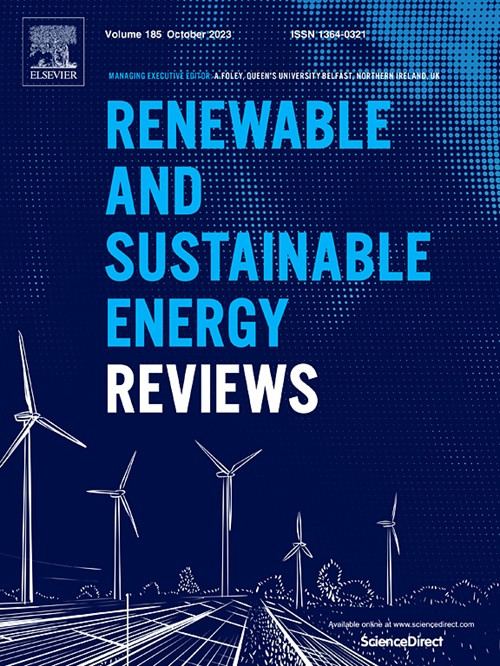An integrated identification framework for analyzing air pollutants mitigation potential from crop residue burning
IF 16.3
1区 工程技术
Q1 ENERGY & FUELS
引用次数: 0
Abstract
Crop residue burning is a key contributor to air pollution, highlighting the need for comprehensive emission assessments and reduction strategies to promote sustainable development. Biomass power (BP), open biomass burning (OBB), and indoor biomass burning (IBB) are the primary forms of crop residue burning. While previous studies have established emission inventories for individual burning forms, there is a significant gap in spatial assessments that integrate multiple forms to better inform crop residue management. This study developed a framework that integrates BP, OBB, and IBB to generate a high-resolution (10 × 10 km) emission map. Notably, it is the first to establish a spatially explicit emission inventory considering multiple forms of crop residue burning. Focusing on Northeast China as a case study, the results indicate that the quantity of crop residue burned was 16,900 tons, with OBB and IBB accounting for 99.7 %. The emissions of PM2.5, NOx, and SO2 were 666,000 tons, 107,000 tons, and 14,500 tons, respectively. Transitioning all crop residues to BP could reduce these emissions by 96 %. Additionally, this study identified spatial heterogeneity in emission reduction potential, partitioned counties accordingly, and proposed spatially differentiated mitigation strategies. These insights can inform crop residue planning and contribute to achieving sustainable development goals.
一个综合识别框架,用于分析减少作物秸秆燃烧产生的空气污染物的潜力
焚烧农作物秸秆是造成空气污染的一个主要因素,因此需要开展全面的排放评估和减排战略,以促进可持续发展。生物质发电(BP)、开放式生物质燃烧(OBB)和室内生物质燃烧(IBB)是农作物秸秆燃烧的主要形式。虽然以前的研究已经建立了单个燃烧形式的排放清单,但在整合多种形式以更好地为作物残留物管理提供信息的空间评估方面存在重大差距。本研究开发了一个整合BP、OBB和IBB的框架,以生成高分辨率(10 × 10 km)的排放图。值得注意的是,它是第一个建立空间明确的排放清单考虑多种形式的作物秸秆燃烧。以东北地区为例,研究结果表明:东北地区作物残茬焚烧量为1.69万吨,其中OBB和IBB占99.7%。PM2.5、NOx、SO2排放量分别为66.6万吨、10.7万吨、1.45万吨。将所有作物残留物转化为BP可以减少96%的排放。此外,本研究还发现了减排潜力的空间异质性,据此划分了县域,并提出了空间差异化的减缓策略。这些见解可以为作物残留规划提供信息,并有助于实现可持续发展目标。
本文章由计算机程序翻译,如有差异,请以英文原文为准。
求助全文
约1分钟内获得全文
求助全文
来源期刊

Renewable and Sustainable Energy Reviews
工程技术-能源与燃料
CiteScore
31.20
自引率
5.70%
发文量
1055
审稿时长
62 days
期刊介绍:
The mission of Renewable and Sustainable Energy Reviews is to disseminate the most compelling and pertinent critical insights in renewable and sustainable energy, fostering collaboration among the research community, private sector, and policy and decision makers. The journal aims to exchange challenges, solutions, innovative concepts, and technologies, contributing to sustainable development, the transition to a low-carbon future, and the attainment of emissions targets outlined by the United Nations Framework Convention on Climate Change.
Renewable and Sustainable Energy Reviews publishes a diverse range of content, including review papers, original research, case studies, and analyses of new technologies, all featuring a substantial review component such as critique, comparison, or analysis. Introducing a distinctive paper type, Expert Insights, the journal presents commissioned mini-reviews authored by field leaders, addressing topics of significant interest. Case studies undergo consideration only if they showcase the work's applicability to other regions or contribute valuable insights to the broader field of renewable and sustainable energy. Notably, a bibliographic or literature review lacking critical analysis is deemed unsuitable for publication.
 求助内容:
求助内容: 应助结果提醒方式:
应助结果提醒方式:


